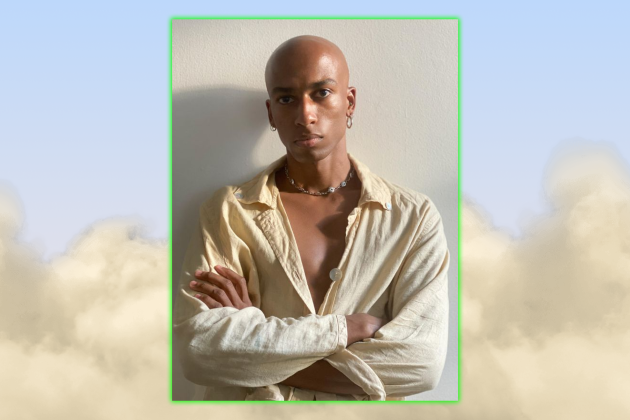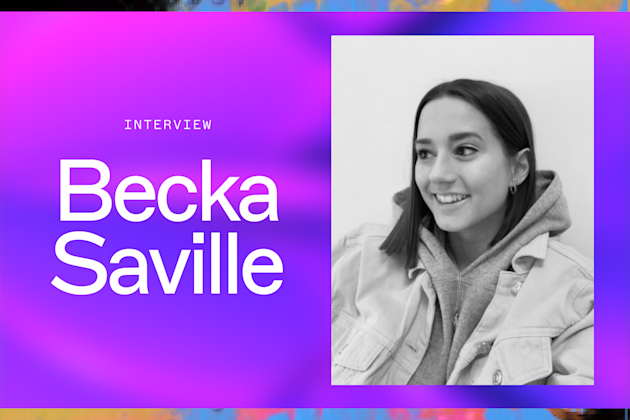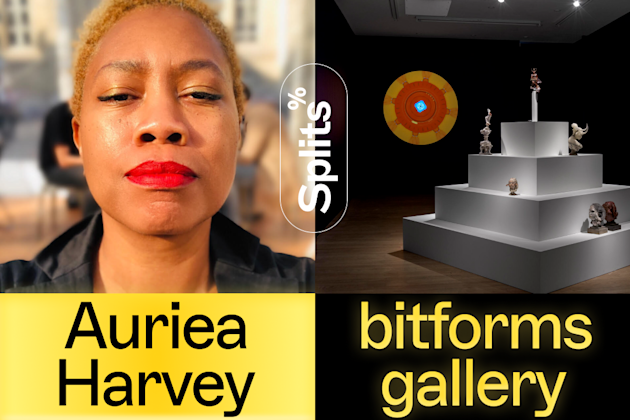Tory Bryant has an eye for design.

What is your NFT origin story? How did you end up in this world?
During the early pandemic and lockdown, my work at Nike was put on pause and my kids were suddenly home all the time. It’s not that I had more time—my wife and I were busy entertaining, managing and homeschooling—but I wasn’t getting the creative stimulation I was used to having at work. I remembered how much art, for me, is like breathing, and how my need to create is what drew me to my profession in the first place. I had become so consumed with pouring my creativity into professional projects. In this strange new time of pandemic isolation, I was using social media to connect with friends and family more so than I had in the past. NFTs came next. They were introduced to me by Amrit Pal Singh. I was excited about the work, the possibilities, and the community.
How would you describe your eye and what you look for in works to add to your collection?
I want to collect works that support and honor women, people of color and LGBTQIA artists. I don’t search within a specific category, but I do find that I enjoy 2D works. I look for a strong composition, color, and design sense—like the thoughtful use of line weight, or brushstroke—and a polished follow through. That doesn’t mean it can’t be chaos, but it should be thoughtful, deliberate chaos. I want to purchase art that is colorful, rich, and tells a thoughtful story. When I find something that grabs me, I typically go through a checklist of questions like, “How does the artist’s presentation look across all platforms? Is the story cohesive? Do I enjoy looking at the work? Do I connect with the work, or the artist? Who is this person, and what is their experience and artistic progression?” This tells me if they’re invested in the community, and if they’re in it for the long haul.
You’re also an accomplished artist yourself, can you tell us about your background?
I completed my undergraduate degree in fine art at the Lyme Academy of Fine Art in Old Lyme, Connecticut. I was selling work as an artist, but my first professional job was at Hasbro, where I was a toy painter/designer. After that, I got a role at renowned stop-motion animation house, LAIKA, which led to some great successes for me, including providing art and creative direction, and spearheading critical technical innovations on several films. I worked on Coraline, ParaNorman, The Boxtrolls, Kubo and the Two Strings, which won a BAFTA, and The Missing Link, which won a Golden Globe. I then moved on to Nike and translated the 3D innovation and tech I had developed at LAIKA to that environment, inside the “Space Kitchen.” A conceptual sneaker for the Air Jordan 3 RTNA I designed in collaboration with Tinker Hatfield is currently on display as part of the Naturally Brilliant Colour exhibition at Kew Gardens, London.
You won an Oscar for your production achievements, can you tell us a bit more about that?
At LAIKA, I developed a complex, 3D color-mapping index system for machines that had previously failed to achieve the rich color variations of design-approved, hand-painted prototypes. I talked more about this in my recent interview on the Mograph podcast, but I led a team that focused on 3D innovation technology and how to improve animation through color and technology. The process evolved with each film I and earned us the Science & Technology Oscar in 2016.
What do you think about the phenomenon in NFTs of artists also becoming collectors and community leaders?
I think it’s a natural progression of the space. I feel all consumers are choosing art based on different criteria, and by understanding what values are behind each piece. As an artist, I have an understanding about what an artist is feeling, and I love being able to contribute to helping them and building their momentum. How cool is it that artists can support work and people they are invested in? That we have the potential to influence and steer the market and to change lives? How will the conversation change when artists have a louder voice? I love being able to help creators build momentum.
What is it about the emerging NFT space that needs the most attention and improvement right now?
We need to focus on diversity and equality. This goes hand in hand with the previous question. We have an opportunity to balance the scales, and we need to encourage women, people of color, and LGBTQIA artists to participate in these artistic communities. As consumers and/or collectors, we need to actively search and promote the value of their perspectives and work. We need more focus on building a healthy, and thereby more interesting, ecosystem for all artists and people.
Can you tell us a story about a work in your collection and what it means to you?
Every piece I have is amazing. Michelle Thompson is an award-winning total badass with pieces featured in the New York Times, and I happen to have her genesis NFT. Since then, her work has become more popular. I’m so surprised and grateful I had the chance to get that piece at the price I did. She tells stories through collage, and as a collage artist, no one holds a candle to her work or her professional past.
Marryanne Chrisholm is also an amazing traditional artist, who started trending on Foundation after she was promoted by other female artists. I have her genesis, too. Her story will bring you to tears. Her drive and determination is unmatched. She has started speaking her truth on spaces and I recommend everyone hear her speak—you won’t leave the same as you came in; you will forever be changed by her words. She will definitely be a leader in this community, and I look forward to watching that happen.
You’re very active on Twitter. How does Twitter play into your collecting strategy and understanding of the community?
It plays a huge role. This is where our community is based. I am in Spaces talking with several groups daily, trying to get a better perspective on people who I may be thinking about collaborating with, or buying a piece from, or supporting, or befriending. I’m in the mix and I enjoy talking, pushing, and educating people on my story and toward the initiatives I care about.
Do you have plans for your collection?
My goal is to support women, people of color, and LGTQIA artists, and I hope for it to become the biggest revolving collection in the NFT space. My objective is to create a secondary market from which I can continue supporting artists. I’m not here to collect and keep; my plan is to catch and release. Supporting the artist is my ultimate goal. I will continue looking for genesis pieces, promoting the artists I find, and curating a mix of diversity among the NFT community to help cultivate a healthy ecosystem. And as I move forward, I hope to curate larger shows on bigger platforms, advocating for diversity and equality.
Read more

Tyler Givens on making fantasies a reality.

Becka Saville visualizes memories.
